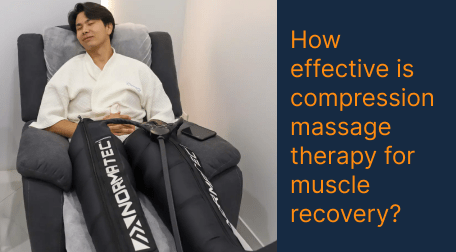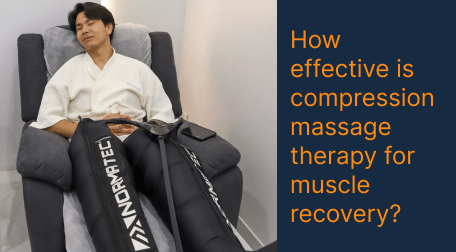Compression massage therapy

In the pursuit of peak physical performance and overall well-being, individuals are constantly seeking innovative approaches to expedite muscle recovery. One such method gaining popularity is compression massage therapy. But how effective is compression massage therapy for muscle recovery? In this article, we delve into the science behind compression massage, and its benefits, and address some frequently asked questions to provide a comprehensive understanding.
Understanding Compression Massage Therapy: Compression massage therapy involves the application of pressure to specific areas of the body through devices like compression sleeves, wraps, or specialized massage tools. The primary goal is to enhance blood circulation, reduce inflammation, and alleviate muscle soreness.
Benefits of Compression Massage Therapy for Muscle Recovery:
Improved Blood Circulation: Compression therapy aids in enhancing blood flow, delivering essential nutrients and oxygen to muscles, and facilitating the removal of metabolic waste products.
Reduced Muscle Soreness: The application of compression helps minimize muscle soreness by preventing the buildup of lactic acid and reducing inflammation.
Faster Recovery: Accelerated blood circulation means quicker removal of toxins and faster replenishment of nutrients, leading to a speedier recovery process.
Enhanced Lymphatic Drainage: Compression massage supports the lymphatic system, promoting efficient drainage of fluids and reducing swelling.
Prevention of Injury: Regular use of compression therapy may contribute to injury prevention by maintaining muscle flexibility and reducing the risk of strains.
Commonly Asked Questions:
Q1: How often should one undergo compression massage therapy for optimal results?
The frequency of compression massage therapy sessions varies depending on individual needs and activity levels. However, incorporating it into a post-workout routine 2-3 times a week is a common recommendation.
Q2: Can compression therapy be used as a standalone recovery method?
Compression therapy is effective as part of a comprehensive recovery plan that includes proper nutrition, hydration, and rest. It complements other recovery techniques for holistic benefits.
Q3: Are there any contraindications to compression massage therapy?
Individuals with certain medical conditions, such as deep vein thrombosis, peripheral artery disease, or diabetes, should consult a healthcare professional before using compression therapy.
Conclusion:
In conclusion, compression massage therapy stands out as a valuable tool for muscle recovery, offering a range of benefits from improved blood circulation to reduced muscle soreness. When used as part of a well-rounded recovery strategy, it can significantly contribute to faster recovery and enhanced overall performance. As with any health-related practice, it is crucial to consult with a healthcare professional before incorporating compression massage therapy, ensuring it aligns with individual needs and health conditions. Unlock the potential of compression massage therapy and take a proactive step towards optimizing your muscle recovery journey.
